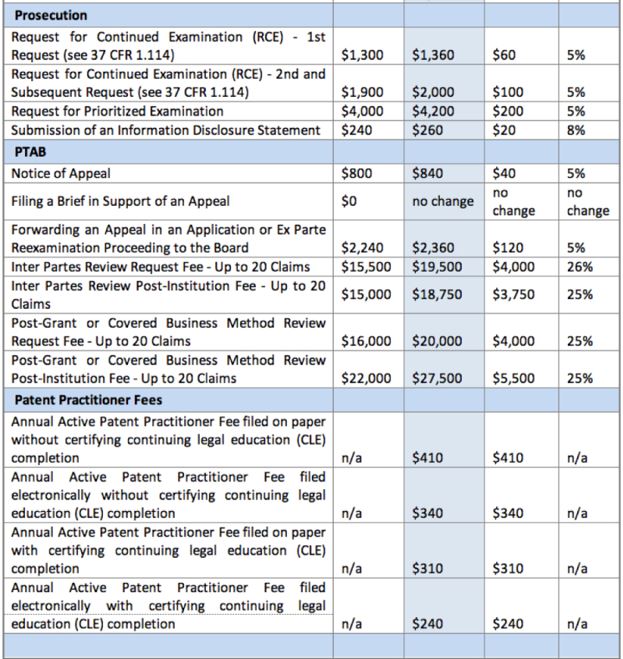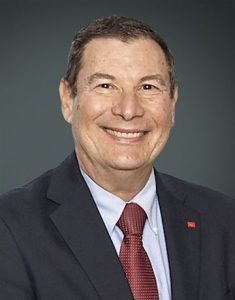The Patent Trial Appeal Board (PTAB) recently reversed an examiner’s 101 Alice rejection in Ex Parte Jadran Bandic, and in so doing, provided insight into how the PTO will administer Director Iancu’s 101 Guidance Memo. The PTAB found the examiner’s analysis in Step One of the Alice rejection only considered limited portions of the claim and did not address whether the claim as a whole amounted to an abstract idea. Despite the fact that the PTAB overruled the examiner’s finding in Step One of the Alice analysis and negated a need to continue their review, the PTAB specifically went on to discuss the merits of Step Two, where they found that “The Examiner’s analysis of the second step of the Alice analysis is conclusory and unsupported.”[1] This ruling indicates a clear directive that examiners will need to provide detailed explanations and specific supporting evidence to withstand scrutiny on appeal.
After consistent promises made since his nomination, PTO Director Iancu fulfilled those promises last month when he proposed new guidance for patent subject matter eligibility under 35 U.S. 101 in a Federal Registry Notice. The proposal came on the heels of the Federal Circuit’s precedential decision in Berkheimer v. HP Inc., which held that patent eligibility analyses should not group claims together indiscriminately and that eligibility determinations are not solely questions of law, but also questions of fact.[2] The PTO issued a memorandum addressing 101 rejections after the Berkheimer decision which is available for public comments here and will remain open for comments until August 20th, 2018.
Since the Mayo v. Prometheus decision in 2012, where the Court first introduced the phrase “well-understood, routine, conventional activity previously engaged in by researchers in the field,” and the subsequent two-step framework for analysis set out by the Court in Alice in 2014, the exact parameters of patent eligibility under 101 have been under severe scrutiny. The PTO’s current guidance of the Mayo-Alice framework is found in MPEP 2106, directing that examiners “should conclude that an element (or combination of elements) represents well-understood, routine, conventional activity only when the examiner can readily conclude that the element(s) is widely prevalent or in common use in the relevant industry.”[3]
Much of Iancu’s career before becoming PTO director came as a litigator, including experience in front of the PTAB. This has lead to a significant amount of interest in the approach he’ll take as PTO Director, and especially with PTAB procedural issues. In a senate hearing last November, Iancu espoused the belief that “[t]o a large extent we should see how the recent development in the case law and some of the recent acts of Congress are working out, and take stock of that.” When the Berkheimer decision came down from the Federal Circuit, he took one of his first opportunities to take such stock.
Berkheimer v. HP, Inc. originated in the Northern District of Illinois with a summary judgment decision on Berkheimer’s 7,44,713 patent concerning digital asset management, after he had sued HP for infringement. The court held claims 1-7 and 9 invalid as ineligible under § 101 and held claim 10 indefinite and claims 11-19 invalid for indefiniteness due to their dependency on claim 10. Berkheimer appealed this decision to the Federal Circuit.
On appeal, Berkheimer argued that the district court had improperly neglected to consider his arguments as to claims 4-7’s validity, because it took arguments towards claim 1 as representative, and failed to apply the correct standard in deciding the validity of claims 4-7 for summary judgment. In its decision, the Federal Circuit determined that the question of whether something is “well-understood, routine, and conventional to a skilled artisan at the time of the patent is a factual determination.”[4] This means that the decision with respect to claims 4-7 should have been considered “in the light most favorable to the non-movant,” in this case, Berkheimer’s. Therefore, the court decision vacated-in-part and remanded the validity of claims 4-7 to the district court.
This decision addressing § 101 interpretation prompted Iancu to release a memo on the PTO’s additional guidance for examiners issuing rejections under 101. In order for an examiner to ‘readily conclude’ that something is well-understood, routine and conventional, the PTO offers four options for support of that factual finding.[5] The first three possibilities are citations:
1). To an express statement in the specification or to a statement made by an applicant during prosecution, specifically explaining that the finding “cannot be based only on the fact that the specification is silent with respect to describing such element.”
2). To a court decision from MPEP § 2106.05(d)(II) noting the finding.
3). To a publication which notes the finding (book, manual, review article, that “describes the state of the art and discusses what is well-known and in common use in the relevant industry”). It should be noted that the definition of publication here is not defined the same as a printed publication under 102, because 102 requires only 1 publication of the idea, whereas “well-understood” would require further evidence of its prevalence in the field.
4). Lastly, the memo provided that the examiner may take official notice of the well-understood, routine, conventional nature of the elements, but this is limited to situations where an examiner is certain of such nature, and should be done in accordance with MPEP § 2144.03. If the applicant challenges the official notice in the manner allowed per the MPEP, then the examiner would in turn need to cite to one of the other three options.
With Ex Parte Jandran Bandic, the PTAB has given more insight into how they will be implementing this emphasis on factual findings for Step Two. The patent at issue covers an “analytic method of tissue evaluation,“ with the rejected claims addressing optomagnetic fingerprinting. The examiner rejected those claims because they amounted to “mere data-gathering” and “optomagnetic fingerprinting itself is disclosed in disclosures dating back to 2008”. In reversing this decision, the PTAB noted that the examiner failed to “persuasively explain why [the claims] are steps of “data gathering” and took issue with the fact that the examiner failed to provide any citations for the claim that optometric fingerprinting has been disclosed in prior art since 2008. Additionally, the PTAB referenced the Berkheimer decision and emphasized that an appearance of an element in a “prior disclosure is not adequate to show that the additional element would not be an activity sufficient to transform a claim into a patent-eligible application of an abstract idea”.[6]
This PTAB ruling provides some much needed insight into the level of scrutiny that will be placed on Step Two moving forward, and bears watching as we continue to get more decisions under Iancu’s post-Berkheimer 101 Memo PTO.
[1] Ex Parte Jadran Bandic, Dec. at 6 (PTAB April 30, 2018) (available at https://e-foia.uspto.gov/Foia/RetrievePdf?system=BPAI&flNm=fd2016004417-04-30-2018-1).
[2] 881 F.3d 1360 (Fed. Cir. 2018).
[3] PTO Notice, Fed. Reg, April 20, 2018 (available at https://www.federalregister.gov/documents/2018/04/20/2018-08428/request-for-comments-on-determining-whether-a-claim-element-is-well-understood-routine-conventional).
[4] Berkheimer v. HP Inc, 881 F.3d 1369 (Fed. Cir. 2018).
[5] PTO Notice, Fed. Reg, April 20, 2018 (available at https://www.federalregister.gov/documents/2018/04/20/2018-08428/request-for-comments-on-determining-whether-a-claim-element-is-well-understood-routine-conventional).
[6] Ex Parte Jadran Bandic, Dec. at 6 (PTAB April 30, 2018) (available at https://e-foia.uspto.gov/Foia/RetrievePdf?system=BPAI&flNm=fd2016004417-04-30-2018-1).


